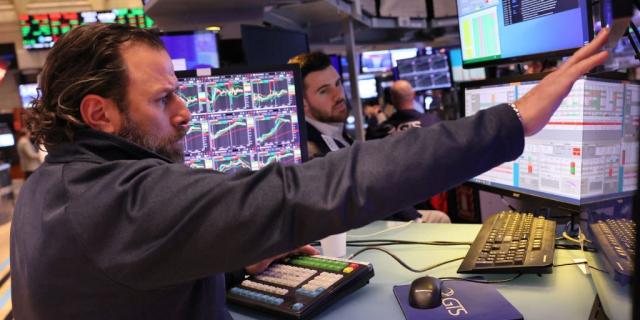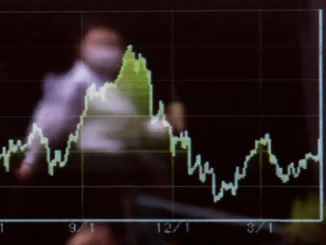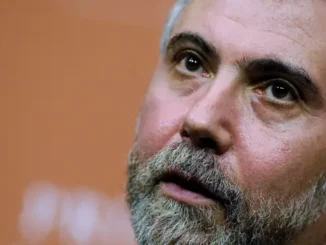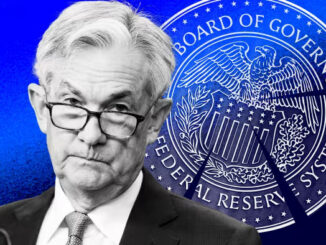
- US inflation has cooled to its slowest pace since May 2021, casting doubt on further Fed interest-rate hikes.
- Annual gains in the Consumer Price Index declined to 4.9% in April, according to data released Wednesday.
- Here’s what President Joe Biden, Paul Krugman, David Rosenberg, and others have said about the latest print.
Investors got a reason to rejoice this week as a report showed US inflation cooled for a 10th straight month in April, coming in lower than economists had estimated.
Annual gains in the Consumer Price Index declined to 4.9% last month, the slowest rate since May 2021 and less that the expected 5%. The rate has declined every month since hitting a 40-year high of 9.1% last June.
The drop in price pressures comes in response to the Federal Reserve’s steepest interest-rate increases since the 1980s, aimed at bringing down inflation back to its 2% target. Just last week, the central bank lifted benchmark rates for the 10th time in a row to a range between 5-5.25%.
But with consumer-price pressures dropping rapidly, traders are scaling back bets for monetary tightening this year.
The inflation surge over 2021 and 2022 – along with the jump in interest rates it entailed – has been the single biggest economic challenge policymakers and investors have faced in recent years.
The ongoing reversal of that theme has spurred a flurry of insightful commentary from top voices. Here’s what seven prominent figures have said about the latest trend and undercurrents of US inflation.
President Joe Biden
“Inflation is now down 40% since last summer, and it’s come down the last nine months in a row. We have more work to do, but we’re trending in the right direction, and we’re making real progress,” Biden said in a tweet.
Paul Krugman, Nobel economist
“Supercore (one definition) still elevated but still trending down,” Krugman said in a tweet.
“I took 4-week moving averages of Google inflation searches. Still somewhat elevated, but suggests that the psychological and perhaps political salience has come down a lot 2/,” he added.
David Rosenberg, president of Rosenberg Research
“Strip out the rental measures and used cars, clear anomalies, and the core CPI index DEFLATED 0.1% MoM in April. We haven’t seen anything like that since Jan/2021, when Jay still had a few toes in the ‘transitory’ camp. So, put that in your pipe and smoke it!,” Rosenberg said in a series of tweets.
“Even better, replace the B(L)S data on used cars with Manheim, and the rent measures with the actual SA data from Apartment List, and the core CPI was -0.4% MoM in April. Now, what was it I said about that pipe again?,” he added.
“Adding to today’s disinflation news — Microsoft hitting the tapes stating that it won’t be giving raises to full-time employees this year. What ever happened to that 1970’s wage-price spiral??” the top economist continued.
Tom Lee, head of research at Fundstrat
“Progressively, I do think the bull case is prevailing,” Lee told CNBC.
“Inflation is falling faster than most people realize…and that’s going to allow the Fed’s pause to become more comfortable for investors because it really leads to a soft landing,” he added.
Charlie Bilello, director of research at Pension Partners
“US CPI has moved down from a peak of 9.1% last June to 4.9% in April. What’s driving that decline? Lower rates of inflation in Fuel Oil, Gasoline, Used Cars, Gas Utilities, Medical Care, Apparel, New Cars, Food at Home, & Electricity,” Bilello said in a tweet.
“After 25 consecutive increases, YoY Shelter CPI moved down from 8.2% in March (highest since 1982) to 8.1% in April. If the Shelter inflation rate has finally peaked, this will have a big impact on overall CPI as Shelter represents more than a third of the index,” he added.
Steve Kamin, former Federal Reserve advisor
“I’m less happy about today’s CPI print than the market seems to be,” Kamin said in a tweet above a pre-recorded interview of himself. “It looks like the downward trend in inflation may be stalling or at least slowing down, and the news from the labor markets isn’t helping” he added.
“Therefore, it looks like the Fed is going to have to keep the fed funds rate at its 5-5.25% range for some time to come, despite the hopes of the market for a reversal of its tightening later this year,” Kamin continued.
Robin Brooks, chief economist at the Institute of International Finance
“Inflation is slowing. How can this “immaculate” disinflation happen when the labor market is still tight? The reason can be found in long lags with which COVID supply disruptions impact inflation. Still lots of those supply chain effects coming off,” Brooks said in a tweet.



